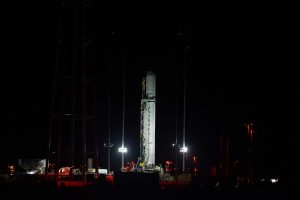NASA has made history by successfully flying the mini helicopter Ingenuity on Mars, the first powered flight on another planet.
Here are some key things to know.
The rotorcraft’s first flight lasted 39.1 seconds as Ingenuity lifted itself to a height of 10 feet (three meters) and then returned to the Martian surface.
While it does have the capacity to fly for 90 seconds and cover a distance of up to 980 feet (300 meters), its test runs are intentionally of limited scope as they are meant to prove only that the technology works.
Ingenuity is not gathering scientific data about Mars or aiding in the search for past microbial life.
Also Read | All you need to know about NASA’s Ingenuity Helicopter on Mars
Previous technology demonstrations include the Mars Pathfinder rover, Sojourner, which was the first ever rover to explore another planet in 1997.
It is hoped that one day, future aircraft can help revolutionize exploration of celestial bodies by going further and faster than rovers, and reaching areas hard to access by land.
NASA is already preparing to send Dragonfly, a much larger rotorcraft-lander, to Saturn’s icy moon Titan where it will fly multiple sorties in search of extraterrestrial life.
Dragonfly launches in 2026 and should reach its destination by 2034.
Tucked under the belly of the Perseverance rover, Ingenuity’s first goal was to withstand launch from Earth, the cruise through space, and landing on Mars.
Next, it had to be unlocked and deployed on the Martian surface while Perseverance drove away fast enough to ensure it didn’t cast a shadow over Ingenuity that would have prevented the aircraft’s solar panels charging up.
Also Read | NASA’s Ingenuity helicopter conducts historic maiden flight on Mars
That was necessary so Ingenuity could run its internal heaters to survive in the chilling Martian night.
Temperatures at the Jezero Crater, just north of the equator, plunge to minus 130 degrees Fahrenheit (minus 90 degrees Celsius), which would have cracked the chopper’s exposed electronics.
Achieving lift in Mars’ rarefied atmosphere — which is just one percent the density of Earth’s, was a major technological challenge.
Engineers at the Jet Propulsion Laboratory spent six years developing a craft that is ultra light yet still powerful enough to accomplish the feat.
Its rotors, which span four feet (1.2 meters), spin at 2,400 rpm — about five times more than a helicopter on Earth. The structure stands 19 inches (0.49 meters) high and weighs just four pounds (1.8 kilograms).
Ingenuity does get a helping hand from Mars’ weak gravity, which is just one-third of Earth’s.
Ingenuity’s first flight was planned for April 11, however, it was postponed after the chopper failed to successfully execute a planned high-speed spin-up test of the rotors on April 9.
NASA identified a software issue — namely a problem with the aircraft’s “watchdog timer” which alerts Ingenuity to potential problems and pauses its processes if it thinks it has detected an error.
Engineers made a coding tweak that allowed Ingenuity to overcome the problem and transition to “flight mode” correctly.
Also Read | NASA’s Ingenuity helicopter to make historic flight to Mars
But the Ingenuity team, led by Burmese-American engineer MiMi Aung, were only 85 percent sure this solution would work.
They had another idea — familiar to IT managers everywhere — in case it did not: reinstalling the flight software and rebooting.
Since it is so far from Earth and cannot be piloted by a human, Ingenuity is pre-programmed with certain parameters, and then it also makes key decisions by itself during the flight, using sensor and camera data.
More than a month after Ingenuity reached Mars, NASA announced a surprise: wrapped around a cable under the helicopter’s solar panel is a small swatch of fabric that was once part of the wing of the Wright brothers’ 1903 flyer.
Also Read | Two Russian cosmonauts, NASA astronaut return from ISS
This aircraft traveled 120 feet (36 meters) in a 12 second hop over the sand-covered Outer Banks of North Carolina, ushering in the era of powered flight on Earth.
“As an homage to the two innovative bicycle makers from Dayton, this first of many airfields on other worlds will now be known as Wright Brothers Field,” announced NASA Associate Administrator Thomas Zurbuchen after Ingenuity’s maiden voyage.







